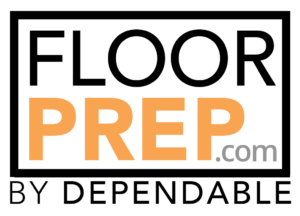Blog
Moisture Mitigation in Concrete | What You Need to Know
Both new and renovation projects may experience moisture-related problems with floor coverings applied over concrete. With new construction, the challenge is to ensure the requirements of designated flooring are respected, and moisture is appropriately addressed, whereas during renovation projects, the contractor must deal with existing slabs that may emit higher levels of moisture than can be tolerated by the new floor covering system.
The Challenge:
Under ideal conditions for floor construction, concrete having a practical low water-cement ratio (0.45 to 0.50) is placed on a true vapor barrier and begins the drying process. However, the drying time required required for some flooring types is often not available due to constructions schedules and environmental conditions.
How can your moisture mitigation process be successful?
The first step to a successful moisture mitigation process is proper planning. You’ll need to opt for functional and value-generating steps such as:
- Use of appropriate Rapid setting repair materials (such as PrepPro RC) to fill trenches and any significant repairs required before moisture mitigation.
- Use of FloorPrep.com’s Vaporseal HM+ as an effective barrier.
- Follow with self-leveling and patching products to provide a smooth uniform cementitious surface for flooring.
- Choose a qualified contractor
- Select a certified “concrete moisture Testing” organization/Technician to evaluate the moisture content in concrete slab
Moisture Mitigation: Effective Products
Each year, failure of floor coverings due to the presence of moisture vapor emissions from the slab is estimated to require billions of dollars for mending purposes. Even if your floor doesn’t actually fail, there still is an enhanced risk related to the growth of mold, mildew and unhealthy conditions. So, what can be done to ensure a long lasting floor, and a healthy environment? The industry has identified one specific material type and standard for the successful mitigation of moisture in concrete. This standard, ASTM F3010 applies only to two component resin based membrane-forming moisture mitigation systems and defines the most predictable and certain mitigation of moisture in concrete.
Vaporseal™ HM Plus is a two part, 100% solids epoxy moisture mitigation system for the control of vapor emissions in concrete. As an effective barrier to moisture up to 100% relative humidity (ASTM F2170-11), and/or 25 lbs MVER (ASTM F1869-11), Vaporseal HM Plus’ low viscosity allows for fast and easy installation over existing and green (7 day old) concrete and utilizes advanced epoxy resin systems (Benzyl Alcohol and Nonylphenol free). The product is VOC compliant resistant to high pH levels making it a perfect solution for concrete subject to high moisture content (RH). In any case, when selecting a product that meets the requirements of ASTM F3010, verify the availability of independent testing.
With the moisture issue addressed, it is typical to complete the “subfloor preparation” with a tight application of self-leveling to provide a cementitious surface for flooring. Dependable recommends utilizing the same manufacturer for repairs, moisture mitigation, priming, leveling and patching. Using the same manufacturer provides trouble free warranty and technical support throughout the process.
Conclusion
Selecting the correct product is just as essential as selecting a contractor for your moisture mitigation needs. Remember, the key is to plan things from the start to avoid any major costs later on. FloorPrep.com’s family of products have been independently tested, are engineered for ease of installation, and offer system warranties. You should expect nothing less from your manufacturer!

